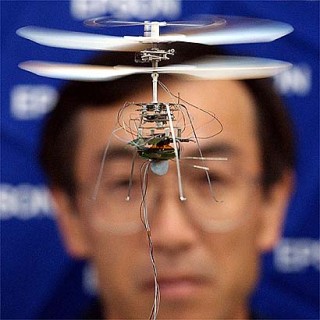As a straighforward approach, i got myself a simple model helicopter from Conrad called Gyrotor at the cost of 50 Euro, just to get an idea of what is possible with affordable helicopter technology. This toy is good fun indeed, but much too far away from what i expected. Granted, my navigation skill are surely not the best, but i can’t imagine this thing showing stable flight behaviour with automated remote control.I’m still waiting for a 150 Euro model to arrive, but i already ditched the idea of having several helicopters with swarm behaviour flying in space for the sake of saving me a lot of trouble.

